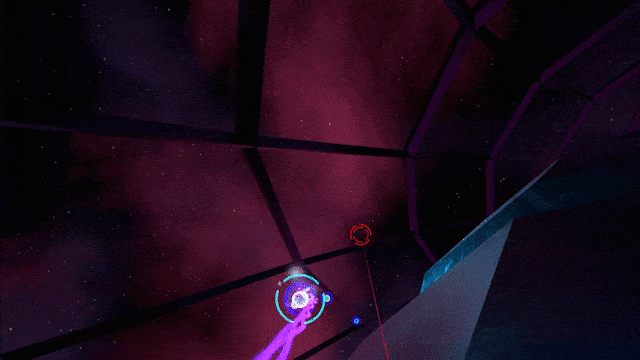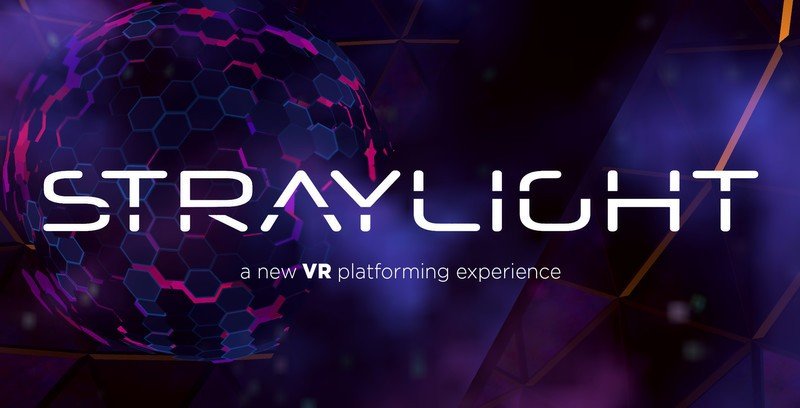Straylight hands on: When Spider-Man meets Mario Galaxy

If you've ever wanted to be Spider-Man, it's pretty clear VR is the best way to go. While the free Spider-Man Far From Home VR experience is a novelty, Straylight's web-slinging-in-space concept promises to deliver a deeper experience — which it should since it's a $20 game — on all major VR platforms when it launches in Q3 of this year. For now, we got the chance to experience Straylight hands on — or, rather, beams on — in the Early Access beta build of the game on SteamVR using an Oculus Quest 2 with Oculus Link.
Conceptually, Straylight is described as a first-person cosmic VR platformer. Essentially, you'll be swinging from point to point using the Straylight — a tool that allows players to grapple onto points of light strewn around the arena-style environments. These grapple points allow players to act a bit like everyone's favorite web-slinging hero, albeit with zero-gravity physics in wholly abstract environments.
While it sounds simple enough at first, mastering that Straylight tool is actually quite difficult.
The goal in Straylight is to sling yourself through all of the goal rings in order to power up the portal at the "end" of each level. Missing any of these rings will force you to make your way backward in order to launch yourself through them again, but it's probably best to just restart the level since you're not just tasked with accurately lighting up these gates but also moving through them as swiftly as possible.
If you do happen to fall somewhere along the lines, you'll start back at the most recently activated gate, all of which have a platform underneath. Straylight relies on players to accurately aim at the next point of light in order to grapple to it, but skilled players will be able to utilize the points not as just a linear path to follow but a star-lit field of dreams that they can use to propel themselves around in null gravity. It's stunningly fun when you really get going, but you'll need to be careful not to lose control if you're to keep winning.

Online leaderboards encourage players to get through levels as quickly as possible, and hard-to-get bonus cubes are an incentive to keep players returning to levels in order to collect them all in true old-school platforming fashion. While it sounds simple enough at first, mastering that Straylight tool is actually quite difficult — at least, it was for me. My son got the hang of it the second he popped the headset on, while it took me at least a dozen deaths before I really got the hang of it. "I guess this game was made for ninjas," he said. Apparently, that was true.
For the first 30 minutes, I found myself getting regularly frustrated with the mechanics, which I thought were a little too arbitrary-feeling for my liking. Once my son took his turn, I figured out that it's best to take it slow at first, simply grappling onto points and slowly moving my arms rather than trying to throw myself to the next point as I originally expected to. Veteran players can, no doubt, do this, but I'm definitely not at that point quite yet.
Part of the issue was that I didn't feel like the zero-gravity physics were quite as believable as Echo VR. Sure, your trajectory continues in a straight path until acted upon, but that wasn't really the problem. Mainly, I wish the lines were stronger and I could keep them connected to the points while I'm flying in order to slingshot myself around. As it stands, the Straylight beams you connect to each light point are more like ethereal webs that snap if you pull them too far, forcing players to be extremely careful in how they move. It's intentionally unforgiving, but I'd be fine with some more free-flowing mechanics just to play around from time to time.
Get the latest news from Android Central, your trusted companion in the world of Android

Mechanically speaking, using the Straylight tool feels less like Spider-Man-style swinging and more like web-shooters that you use to connect the dots once you get going quickly. Pulling your lines forward will launch you toward the point of light, but I found it's a bit more manageable to simply attach myself to a point and, if necessary, pull gently to bring myself forward. I'm hoping we get some different tools in the final version that'll change up the physics a bit because it would be really cool to try out different ways of moving depending on the level structure.
Straylight brings a classic platformer collectathon structure to space in the form of a web-slinger.
Acrobatic moves take a lot of practice to do, but they do make those extra collectibles incredibly rewarding feeling when you finally nail the moves needed to grab them. Visually, the game is beautiful in a simple way, and the zen-like soundtrack makes you feel like you're in space. It's also a super tiny app size, which will be particularly great for those Oculus Quest 2 owners that opted for the 64GB version. Straylight 1.0 will be adding dozens of levels, achievements, and more leaderboard functionality than what's currently available in Early Access.
Those achievements, in particular, are something I personally look forward to since this is structured more like an old-school platformer that rewards players for collecting items and performing incredible feats. Straylight developers Dr. Bloc are still working on the title and plan to deliver it on Steam, Oculus Rift, Oculus Quest, and PlayStation VR platforms later this year, including even more features than we saw in our Straylight hands on. If you want to try it yourself, head on over to the Straylight Steam page (linked below) and give the demo a download!


